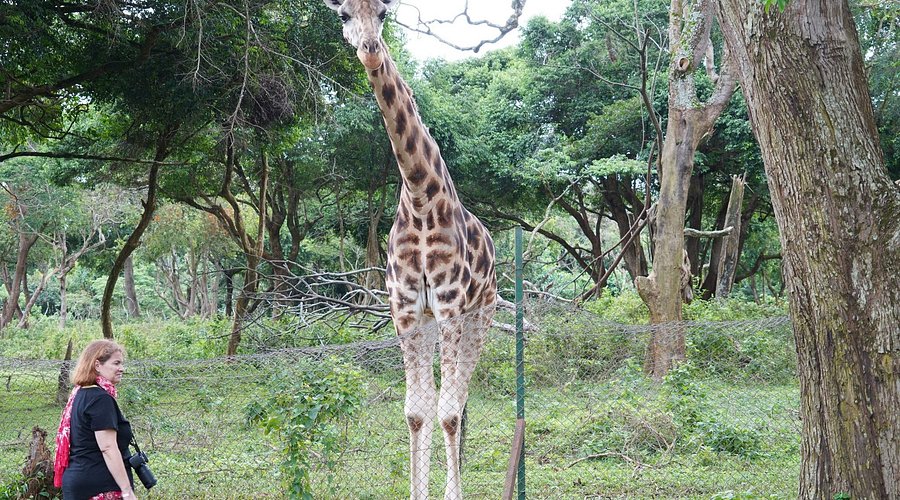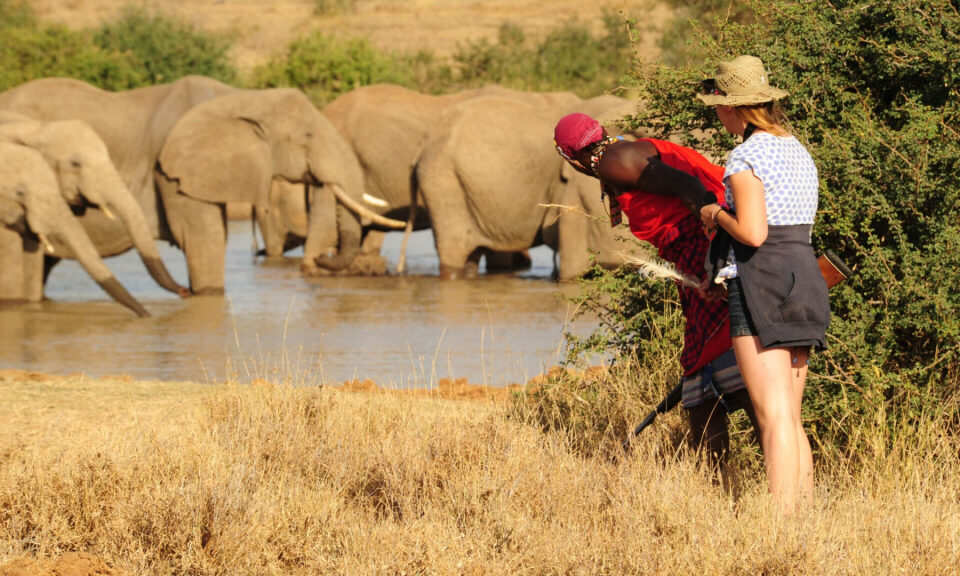- GET IN TOUCH WITH US:
- +256 753518160
- +256 777842166
- info@experiyatourcompany.com

What’s special about the equator crossing at Kayabwe?
November 10, 2025
What’s the best coffee to buy in Uganda?
November 10, 2025Can I visit the Uganda Wildlife Education Centre?

Can I Visit the Uganda Wildlife Education Centre?
For travelers seeking a closer connection with Uganda’s incredible biodiversity, the Uganda Wildlife Education Centre (UWEC) offers one of the most rewarding and educational wildlife experiences in the country. Located on the shores of Lake Victoria in Entebbe, just about 10 minutes from Entebbe International Airport, UWEC is more than a zoo — it’s a sanctuary, a conservation center, and a living classroom that tells the story of Uganda’s natural heritage. For both local and international visitors, it provides a fascinating window into the country’s diverse wildlife and a powerful introduction to Uganda’s conservation efforts before heading out on a national park safari.
A Brief History of the Uganda Wildlife Education Centre
The Uganda Wildlife Education Centre has deep roots in the country’s conservation history. It was originally established in 1952 as a small zoo by the Colonial Government, primarily to act as a reception and rehabilitation facility for injured, rescued, or confiscated animals. Over time, it evolved into a national institution dedicated to wildlife education, research, and conservation awareness.
In the 1990s, UWEC underwent a transformation that redefined its purpose. No longer just a zoo, it became a center focused on environmental education and the welfare of Uganda’s native wildlife. Today, UWEC operates under the management of the Uganda Wildlife Authority (UWA) and plays a vital role in preserving the country’s rich ecosystems while educating the public about wildlife protection and sustainable coexistence.
What Makes UWEC Unique
Unlike traditional zoos, the Uganda Wildlife Education Centre doesn’t exist purely for entertainment. Its mission centers around conservation and education. Many of the animals you see here were rescued from poachers, illegal traders, or injury. UWEC provides them a safe home while working to rehabilitate and reintroduce some into the wild when possible.
The center is beautifully designed to resemble natural habitats, allowing animals to live in spacious enclosures that mimic the savanna, forest, or wetland environments found across Uganda. As you walk through the shaded pathways, you experience a blend of education, nature, and relaxation — a perfect prelude to exploring Uganda’s national parks.
Animals You Can See at the Uganda Wildlife Education Centre
UWEC is home to a wide variety of wildlife species representing the incredible diversity of Uganda’s ecosystems. Among the highlights are some of the country’s most iconic animals:
Lions: The sight of Uganda’s majestic lions up close is unforgettable. Many of them were rescued from conflict with humans or illegal captivity. Seeing them lounging in their enclosure or hearing their deep roars at dusk is one of the center’s most powerful experiences.
Chimpanzees: UWEC is famous for its resident chimps, some of whom have been rehabilitated from private ownership or poaching. The chimpanzee island and enclosure provide a chance to observe these intelligent primates interact, play, and communicate — giving visitors a glimpse into their complex social behavior.
Giraffes: Graceful and curious, the giraffes at UWEC are always a favorite among visitors. You can get close enough to feed them, feeling their long, rough tongues gently scoop up food from your hand.
Elephants: The center’s elephants, often rescued from difficult circumstances, are gentle giants that captivate visitors with their calm presence and intelligence.
Leopards, Crocodiles, and Rhinos: From stealthy predators to ancient reptiles, UWEC showcases the balance of life across Uganda’s wild landscapes. The rhinos here are part of conservation awareness programs that connect to the reintroduction efforts at Ziwa Rhino Sanctuary.
Birdlife: For bird enthusiasts, UWEC is home to an impressive collection of native birds, including grey crowned cranes (Uganda’s national bird), African fish eagles, ostriches, and shoebills. The aviary section is a paradise for photography and quiet observation.
Educational and Conservation Programs
One of UWEC’s most valuable contributions lies in its education programs. The center hosts thousands of school children and university students each year, providing hands-on lessons about wildlife, ecosystems, and the importance of conservation. Guided tours are available for both local and foreign visitors, where trained guides explain the stories behind each animal, their natural habitats, and how human activities impact their survival.
UWEC also plays a key role in wildlife rescue and rehabilitation. Working in collaboration with the Uganda Wildlife Authority and international partners, it receives animals confiscated from illegal trade, snares, or bushmeat activities. The staff — including veterinarians, caregivers, and researchers — work tirelessly to nurse these animals back to health. For some, like certain chimpanzees or birds, reintroduction to the wild is possible after rehabilitation, while others find a permanent sanctuary at UWEC.
The center’s commitment extends beyond its gates. It supports wildlife conservation initiatives across Uganda, raises awareness about issues like habitat destruction and poaching, and contributes to research on endangered species. In this sense, every visit helps sustain its mission — both financially and by spreading awareness.
Interactive Experiences for Visitors
What makes visiting UWEC truly special is the range of interactive experiences available. It’s not just about watching animals from a distance; it’s about connecting with them in meaningful and responsible ways.
Behind-the-Scenes Experiences: Visitors can take part in the “Keeper for a Day” program, where you join animal caretakers in their daily routines. You may help prepare food, clean enclosures, or assist in feeding sessions under supervision. It’s a deeply rewarding experience that offers a new appreciation for the dedication behind wildlife care.
Chimpanzee Close-Up: For a truly unforgettable encounter, the chimpanzee experience allows you to spend time observing and sometimes even interacting with these intelligent primates. Under strict supervision, you can watch how they communicate, play, and use tools — behaviors that closely mirror our own human traits.
Feeding Giraffes and Elephants: UWEC’s giraffe and elephant feeding experiences are among the most popular activities, especially for families and children. It’s both fun and educational, offering a gentle, hands-on introduction to animal behavior.
Nature Walks: The scenic pathways around UWEC are lined with indigenous trees, medicinal plants, and interpretive signs explaining Uganda’s diverse flora and fauna. Guided nature walks provide insights into local ecosystems and conservation practices.
Why Visit UWEC Before or After a Safari
For travelers planning a safari across Uganda, the Uganda Wildlife Education Centre serves as a perfect introduction or conclusion to the journey. Before heading into the wild parks like Murchison Falls, Queen Elizabeth, or Bwindi, UWEC gives you a preview of the species you’ll encounter — along with their ecological and conservation stories.
After your safari, visiting UWEC deepens your appreciation of Uganda’s wildlife legacy. It’s a place where the lessons learned in the wild find context — where you can see how rescued animals are cared for and understand the efforts being made to preserve future generations.
Because it’s located close to Entebbe International Airport, UWEC also makes a convenient final stop before your flight home. Many travelers spend their last day in Uganda here, combining relaxation, photography, and reflection before departure.
Supporting Conservation Through Tourism
When you visit UWEC, you’re not just a tourist — you’re a participant in Uganda’s conservation story. Entrance fees and activity charges directly support the animals’ care, habitat maintenance, and education programs. The center also collaborates with local communities around Entebbe to promote conservation-friendly livelihoods and environmental stewardship.
Every interaction, every ticket, and every shared story contributes to building a sustainable future for Uganda’s wildlife. In this sense, UWEC represents the ideal model of responsible tourism — where education, conservation, and visitor engagement go hand in hand.
Practical Information for Visitors
The Uganda Wildlife Education Centre is open daily, including weekends and public holidays. The gates typically open from 8:00 a.m. to 6:00 p.m., allowing ample time to explore at your own pace. The best times to visit are during the early morning or late afternoon when animals are most active.
There is an entrance fee that varies for Ugandan citizens, residents, and foreign visitors. Additional fees may apply for special experiences such as the chimpanzee encounter or behind-the-scenes tours.
The center has a café and picnic area where visitors can enjoy snacks or meals, as well as clean restrooms and a gift shop selling wildlife-themed souvenirs. Comfortable walking shoes, light clothing, a hat, sunscreen, and a camera are all recommended to make the most of your visit.
Book Your Experience with Experiya Tour Company
If you’re planning to visit the Uganda Wildlife Education Centre, let Experiya Tour Company curate the perfect experience for you. With their deep understanding of Uganda’s wildlife destinations, Experiya ensures that your visit is seamless, informative, and personalized. Whether you wish to combine your UWEC visit with a boat cruise on Lake Victoria, a tour of Entebbe Botanical Gardens, or a safari to Uganda’s national parks, Experiya handles every detail professionally.
Their expert guides offer insightful commentary, ensuring you gain a full understanding of UWEC’s conservation work and the broader context of Uganda’s wildlife protection efforts. Experiya’s tailored itineraries balance comfort, adventure, and education — allowing you to explore Uganda with purpose and passion.
Traveling with Experiya Tour Company means traveling responsibly. You’re not just seeing Uganda; you’re contributing to its conservation story, one experience at a time.



